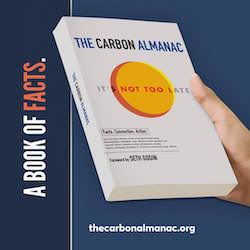Talking with the Blake Teipel, CEO of additive manufacturing developer Essentium, at Rapid + TCT last week, he emphasized the core of the company’s offerings—Machine, Materials, Software. I summarized the show last week. Following are details from the company’s press releases. They include high-performance materials and a new printer, and electronics manufacturing.
First was announced the introduction of Essentium PEKK, made with Arkema 6002 Kepstan resin. This ultra-polymer offers high heat and chemical resistance and mechanical strength to meet the performance requirements of aerospace and industrial applications.
PEKK shares most of the performance attributes of PEEK but has a lower crystallization rate and can therefore be treated as an amorphous polymer. This means it is less affected by the cooling process once the part is 3D printed, thereby minimizing warping. PEKK maintains the flame smoke toxicity ratings for FAR (Federal Aviation Regulations) compliance while offering improved resistance to chemical attack compared to PEI materials. PEKK has an extrusion temperature between 340 and 400°C.
The new material extends Essentium’s open additive ecosystem by allowing manufacturers to scale and meet the requirements of their specific applications with tested and certified materials of their choice. Essentium PEKK ensures manufacturers can quickly produce parts that meet their industry’s reliability, repeatability, and performance standards.
The Essentium HSE 280i HT 3D printer demonstrates how the industry’s first true independent dual extruders (IDEX) machine gives manufacturers the ultimate machine tool to 3D print at scale. The system is independent on both the Y and X-axis, enabling manufacturers to 3D print multi-part builds at industrial speeds, even for parts with complex geometries.
Said Brandon Sweeney, Ph.D., Executive Vice President of R&D, Materials and Co-founder, Essentium Inc.: “Industries such as aerospace and automotive want AM to give them speed to parts without sacrificing quality. By providing an open additive ecosystem with a range of high-performance materials such as PEKK combined with the powerful capabilities of the HSE 280i, industry players now have a unique opportunity to rapidly produce complex parts for harsh and extreme environments on-demand. These AM innovations are game-changing for manufacturers who are driven by improvements in efficiency and time-to-market opportunities.”
Electronics Manufacturing with Industrial-Scale 3D Printing
Essentium, Inc. showcased its work with electronics manufacturer VIRTEX to achieve significant efficiencies, cost-savings, and time-to-market gains. Serving customers across aerospace, military, medical, and other industrial sectors, VIRTEX needed to create large volumes of custom fixtures for circuit boards and electronics placed in plastic enclosures. The fixtures were machined using traditional methods, but the lead time and cost would be unsustainable as production scaled. VIRTEX needed a 3D printing solution that could deliver the speed and agility to meet the demand for 3,000 fixtures per month and a build volume to accommodate 18″ x 6″ parts.
VIRTEX worked with Essentium to explore the possibilities of deploying AM to create custom fixtures that could perform as well as the machined counterparts. Using the Essentium High Speed Extrusion (HSETM) 3D Printing Platform and Essentium PCTG material, VIRTEX could print the set of fixtures in under two days, reducing the lead time by almost two weeks. For the same fixture order that cost $5,000, the 3D printed part was $30, reducing the cost by 99%.
Said Ian Denefe, Manufacturing Engineer at VIRTEX: “The flexibility of additive manufacturing was one of the biggest benefits for us. The fact that we could reverse engineer existing fixtures, print them quickly, and rapidly modify them or replace them made it an ideal solution.”
Said Blake Teipel, Ph.D., CEO of Essentium: “As additive manufacturing goes mainstream, it is increasingly possible to manufacture crucial parts at speed and scale not previously seen. Given its greater design freedom, accelerated time to market, and significantly lower tooling costs, AM is fast becoming one of the most effective ways to meet the demands of electronics manufacturers. We will continue to work with customers like VIRTEX to unlock innovative new possibilities in electronics design and production.”





nice